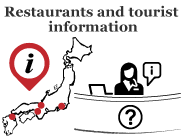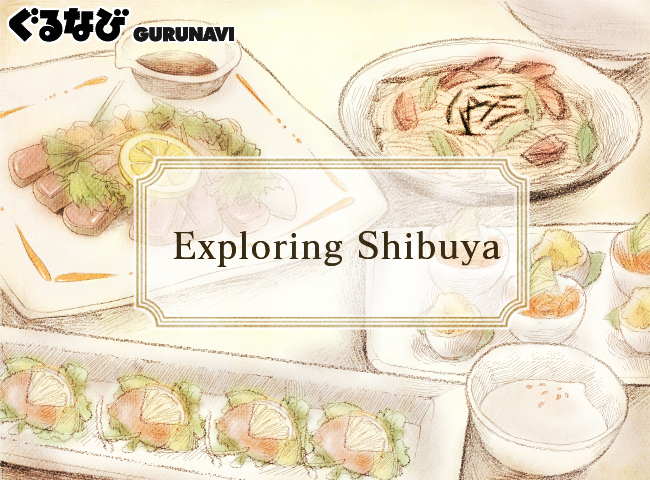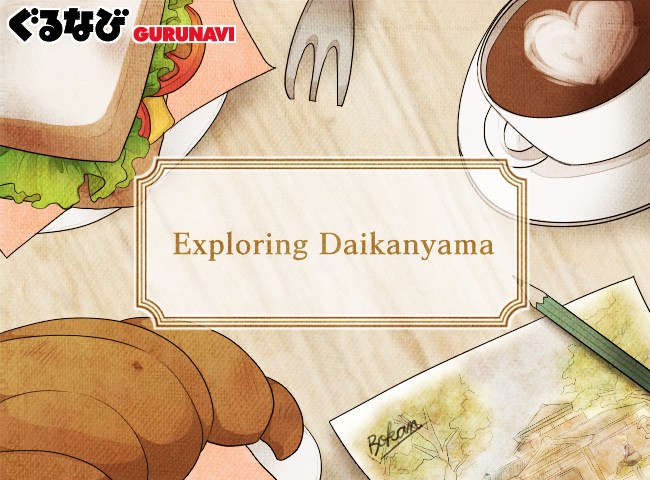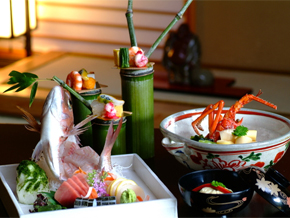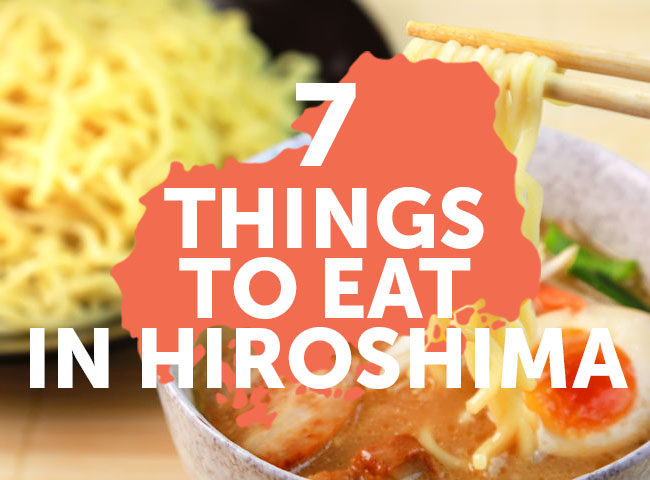Discover Amazing Japanese Okonomiyaki & Monjayaki in Tokyo

Japanese food isn’t only about amazingly beautiful displays of carefully plated seafood; there are times when Japanese people just want to throw something on the griddle and chow down! Okonomiyaki, a dish whose name literally means “as you like it, grilled,” is a savory pancake that usually includes fresh vegetables and a choice of meat or seafood but really can be cooked however you like. Its lesser-known cousin, monjayaki, shares many of the same ingredients and flavors but tends to have a more soup-like consistency. If you’ve ever wanted to try your hands at making okonomiyaki or monjayaki, look no further—Gurunavi is here to help!
Exploring Okonomiyaki and Monjayaki at Tsuru-Chan

Our friend Kelly has somewhat of a duel love affair with okonomiyaki and monjayaki, so we asked to meet up with her at her favorite restaurant Tsuru-Chan in Tsukishima, birthplace of monjayaki, as she continued her quest for the perfect Japanese savory pancake.
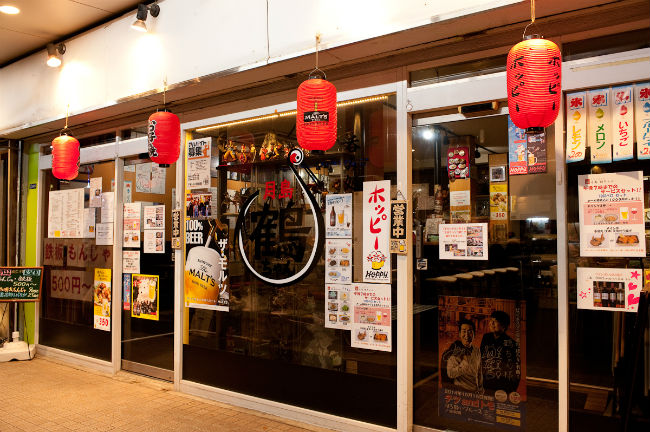
At first glance, Tsuru-Chan looks less like a restaurant and more like a pop-cultural haven perfectly suited for Tokyo’s Akihabara district. Chock-full of Showa-era memorabilia (such as a remote control Godzilla and signed posters of old movie stars and idols) along with a good dose of American comic book heroes, Star Wars knickknacks, and yes, even Hawaiian ukuleles, it’s a place where old and new seem to combine—which is perfect, given what the owner, Chef Iwasaki, is trying to do.
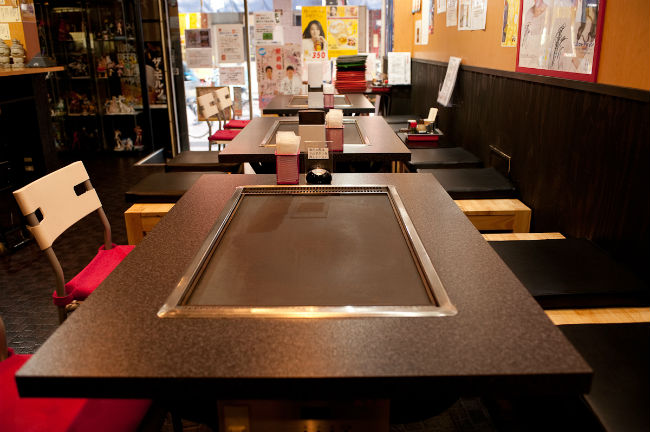
Despite being both a Tsukishima local and a monjayaki fan, the pancake-like consistency and sheer variety of okonomiyaki made that dish his true passion! Still, no matter what style of okonomiyaki he tried over the years, he was never truly satisfied. The problem? Okonomiyaki is typically pressed down onto the griddle as it is being seared, so that all the ingredients are smashed together and any chance of enjoying a fluffy, light texture is lost. As we show you how to cook okonomiyaki step-by-step, be sure to pay close attention to how Chef Iwasaki finally solves this flat pancake of a problem, delivering a deliciously original Tokyo version of okonomiyaki that still retains a classic taste.
Okonomiyaki Simplified

Beyond eggs and flour, okonomiyaki typically features base ingredients like nagaimo potatoes, green onions, cabbage, pickled ginger and bonito flakes. Shrimp, pork and even cheese, a popular choice among foreign tourists, may be added on top of these according to preference.
For “Takobeniten,” Tsuru-Chan’s signature original version, bits of chopped octopus, sakura ebi shrimp and generous amounts of pickled ginger (benishoga) are used. Take note: While okonomiyaki is usually a DIY grilling affair, here you leave it to the expert—after reading below, we think you’ll see why!
7 Steps to Great Japanese Okonomiyaki
1. Mix the base ingredients in a plastic bowl. Plastic helps generate air bubbles between all of the ingredients as you stir, thus bringing you ever closer to the airy texture that the chef so desires.
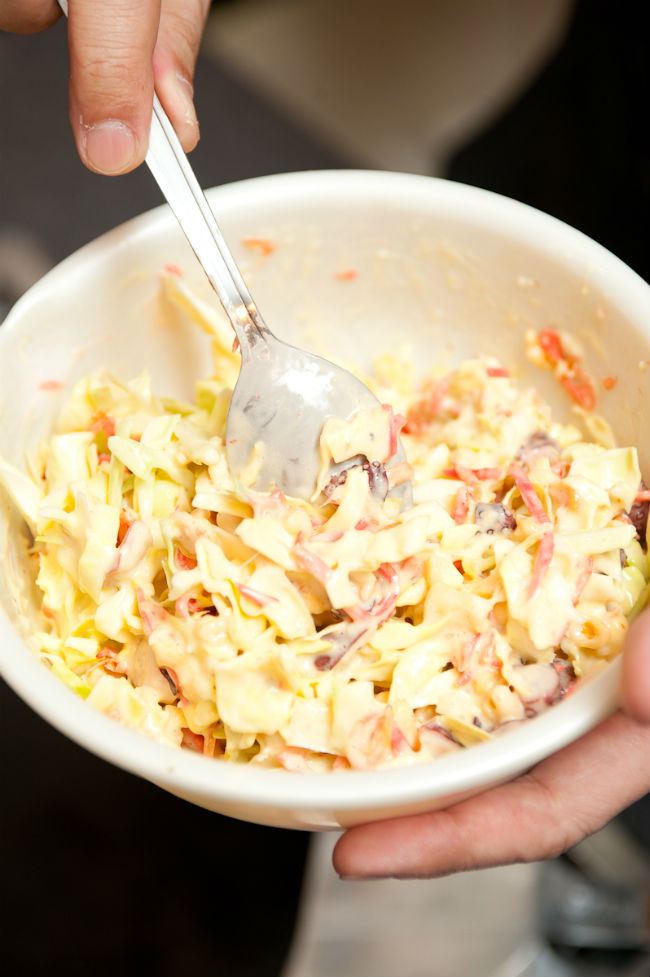
2. Place the mixed ingredients onto the griddle and arrange them into a circle. Use the hera (a type of Japanese spatula) so that they will all literally stick together.
Uncovered okonomiyaki patties usually begin to fall in on themselves during this process, which led Chef Iwasaki to a creative solution: Why not cover the patty with a lid as it steams? He searched far and wide for different shapes, but the steak lid was the only one that really worked! This is because the lid is large enough so that the ingredients have room to rise inside without being tamped down.

3. Flip your patty like a pancake. When cooking okonomiyaki yourself, simply flip as many times as desired for the perfect color and texture. Three times is a charm at Tsuru-Chan, with each separate flip being lidded and timed exactly.

4. Add mayonnaise. While most people tend to splatter on mayonnaise in an uninspiring zig-zag pattern, Chef Iwasaki makes a grid on each and every pancake, plus a ring around the edge. Aside from looking more artistic, this also ensures that the sauce doesn’t escape after being cut.
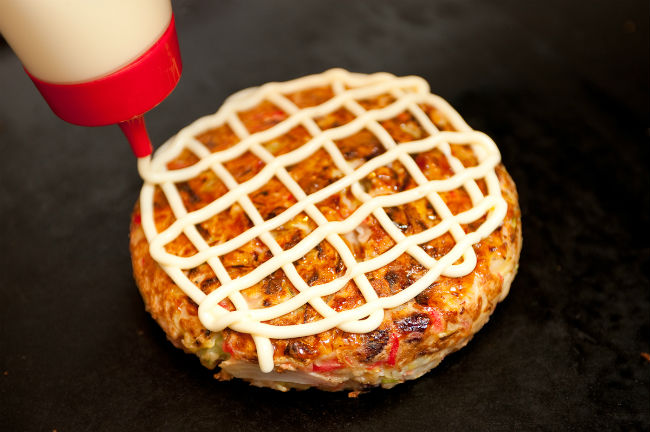
5. Add okonomiyaki sauce and aonori. Not to be confused with regular soy sauce, okonomiyaki sauce is actually a tasty mix of soy sauce, ketchup and honey. As for aonori, it’s a type of green seaweed that is usually sprinkled on top of okonomiyaki as a fine powder.
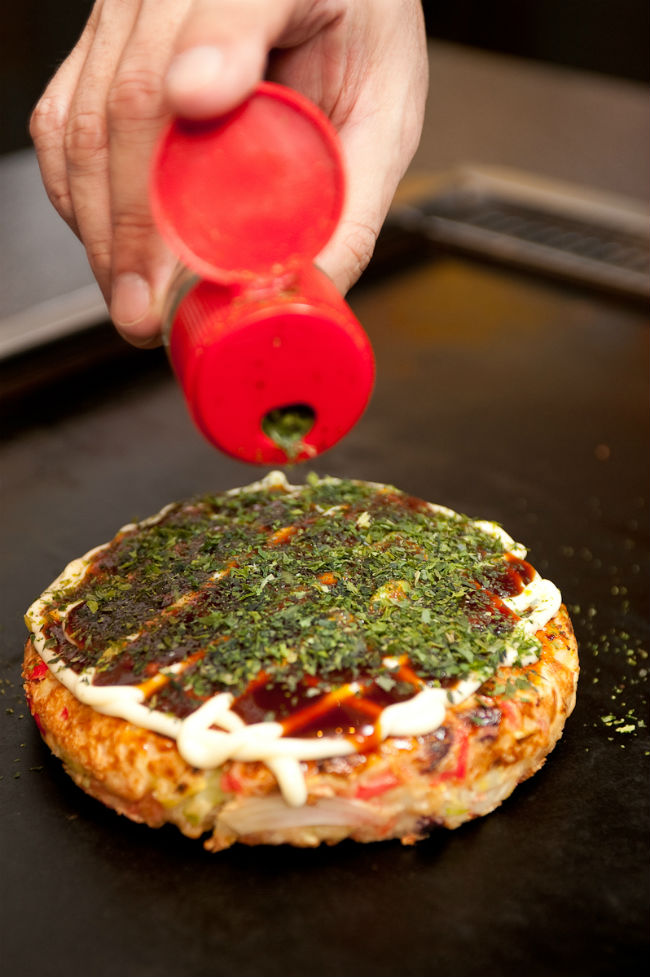
6. Add katsuobushi. As if powdered seaweed wasn’t exotic enough, adding a final touch of katsuobushi (dried bonito flakes) surely will change any okonomiyaki into a masterpiece.
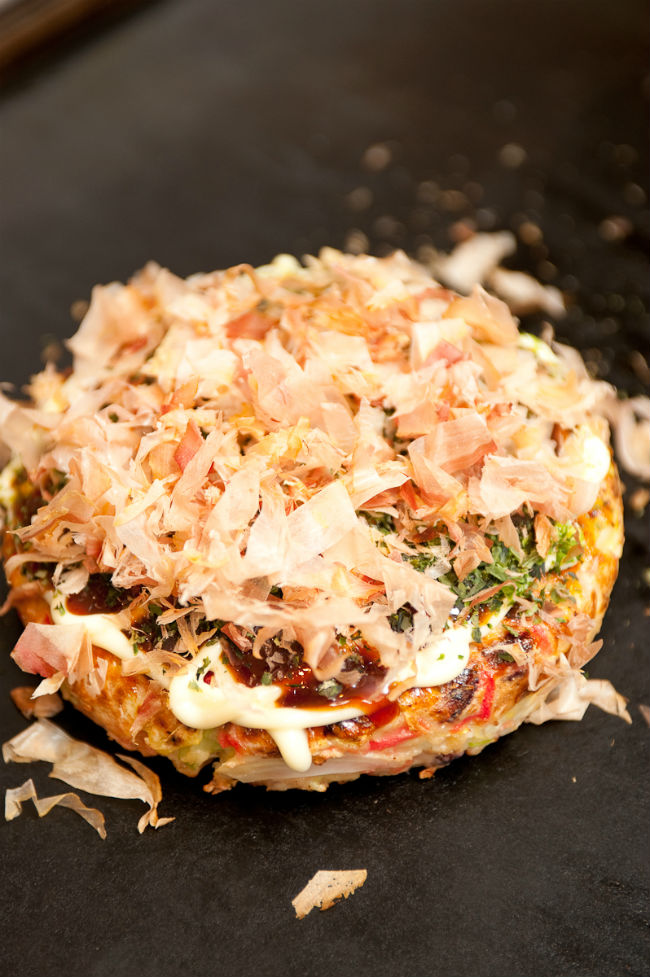
7. Serve your savory pancake. Now all that remains is to drool, cut and eat!
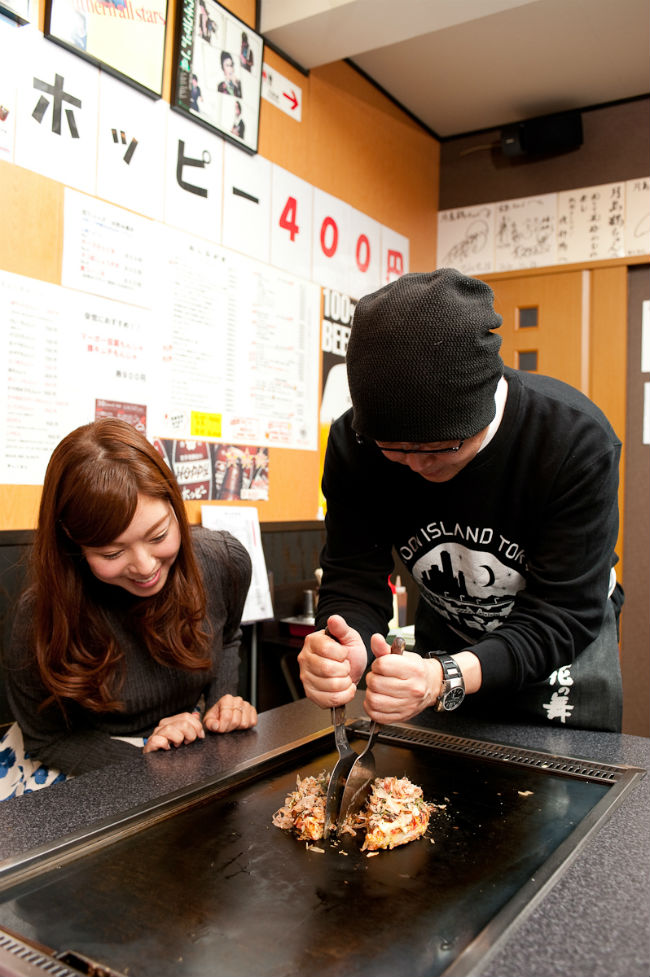
What Did Kelly Think?
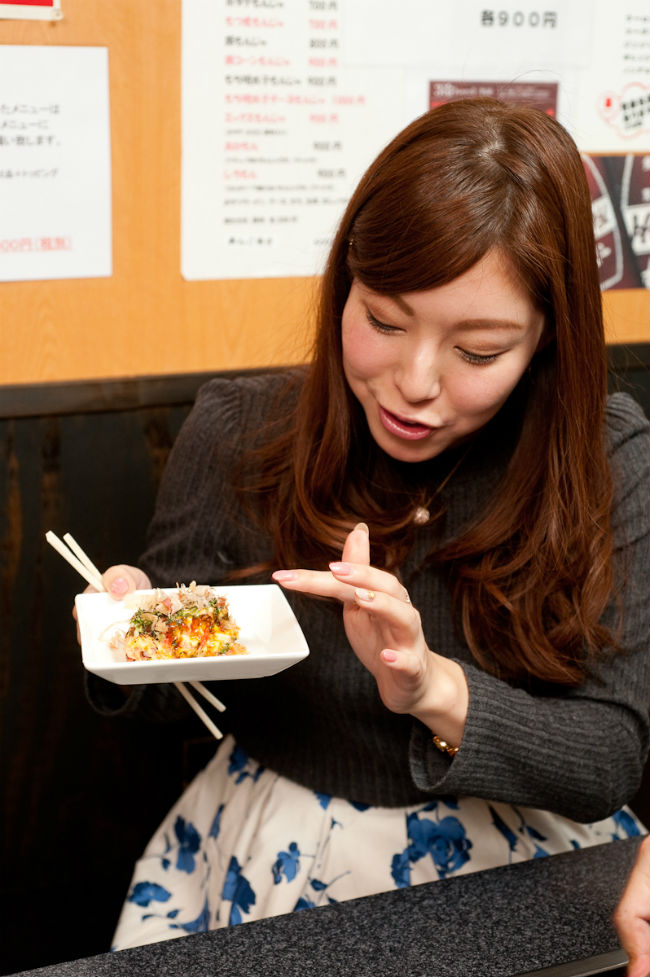
As a longtime okonomiyaki fan, there’s not much that can surprise Kelly—but she met her match at Tsuru-Chan! Just one taste of the golden brown okonomiyaki patty, carefully molded underneath a shining lid, told her immediately that something was different. Unlike most okonomiyaki, where the ingredients tend to get mixed beyond recognition, she could taste and enjoy each and every ingredient in “Takobeniten,” down to the wonderful aonori accent. Even better was the plump round shape and texture to go with it, somehow much more appetizing than she and her friends could ever create in a DIY okonomiyaki restaurant. Just remember that this magic is achieved compliments of Chef Iwasaki at Tsuru-Chan, so now you know where to go when you’re in Tokyo!
Okonomiyaki Restaurant Etiquette
Unlike proper sushi etiquette, there isn’t too much you need to know when dining on okonomiyaki. People don’t usually eat it straight off the griddle, but rather use separate plates. Also, while it’s not unheard of to use the same tools to fry, cut and eat, okonomiyaki is generally eaten with chopsticks after being cut up into manageable portions. Just watching those around you is probably the best way not to get caught with a spatula in your mouth!
Monjayaki Simplified

After Kelly dined on okonomiyaki, Chef Iwasaki offered to grill up another house favorite—monjayaki.
Monjayaki has some basic similarities to okonomiyaki, with one important difference: Instead of eggs and flour, it’s made with a special runny dashi batter. Also unlike okonomiyaki, monjayaki never quite comes together like a pancake. According to the Chef Iwasaki, sometimes foreign tourists eating monjayaki for the first time actually try to wait, expecting it to thicken up! To avoid this confusion and save yourself the disappointment of burnt monjayaki, watch those around you or ask the chef what to do.
7 Steps to Amazing Monjayaki
1. Set the slow-cooking ingredients on the griddle. In this case, the “ingredients” mean anything other than the batter, such as vegetables or meats like pork or beef.
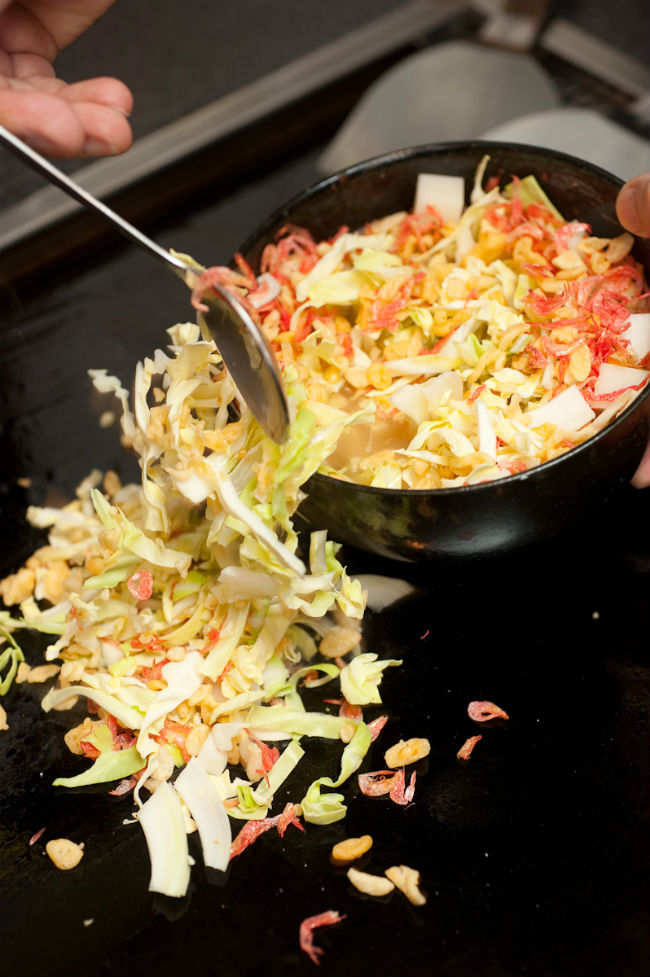
2. Arrange your ingredients into a circle. Using your tools, create a circle and leave a midsized “donut hole” in the middle.
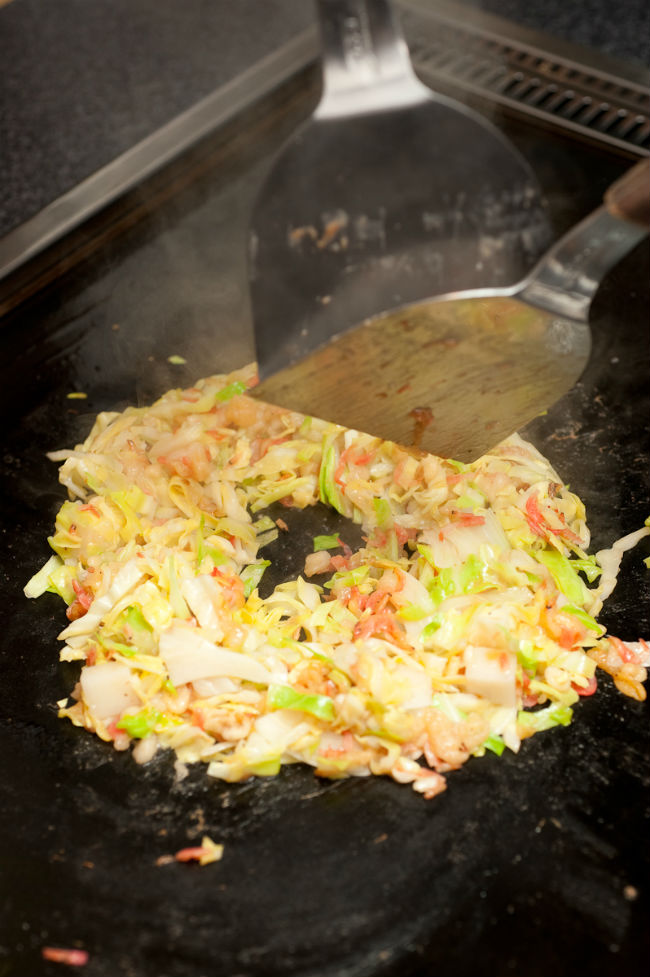
3. Pour the batter and mix. Make a space in the center of your ingredients circle and pour some (but not all!) of your dashi batter into the center.

4. Shape the circle into a donut, pour and mix (again). Repeat Steps 2 and 3, pouring your remaining batter in and over the donut hole as necessary to finish it. Many Japanese people automatically do this step twice, although monjayaki is far from an exact science.
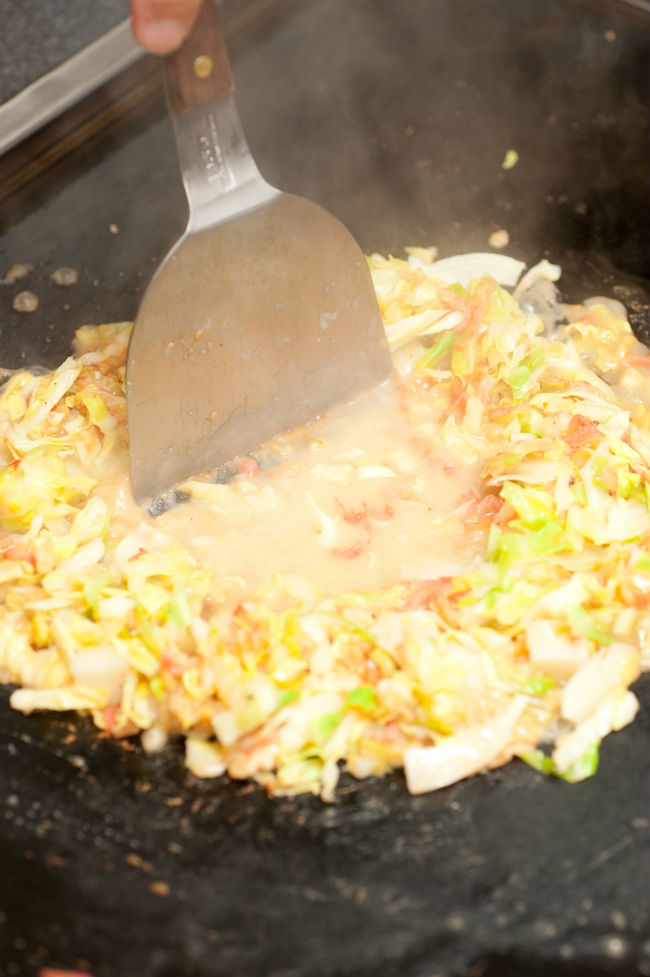
5. Add the remaining ingredients. If you happen to eat Monjayaki at Tsuru-Chan, be sure to try mentaiko (salted walleye pollack roe with red pepper) and mochi, which are house specialties.
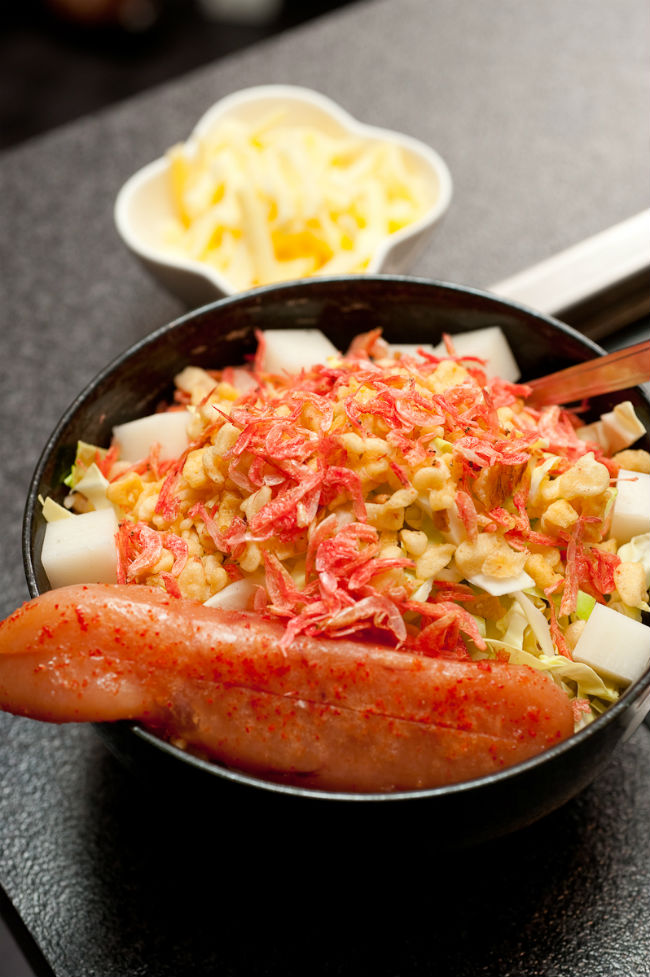
6. Add toppings. It’s popular to top monjayaki with cheese.
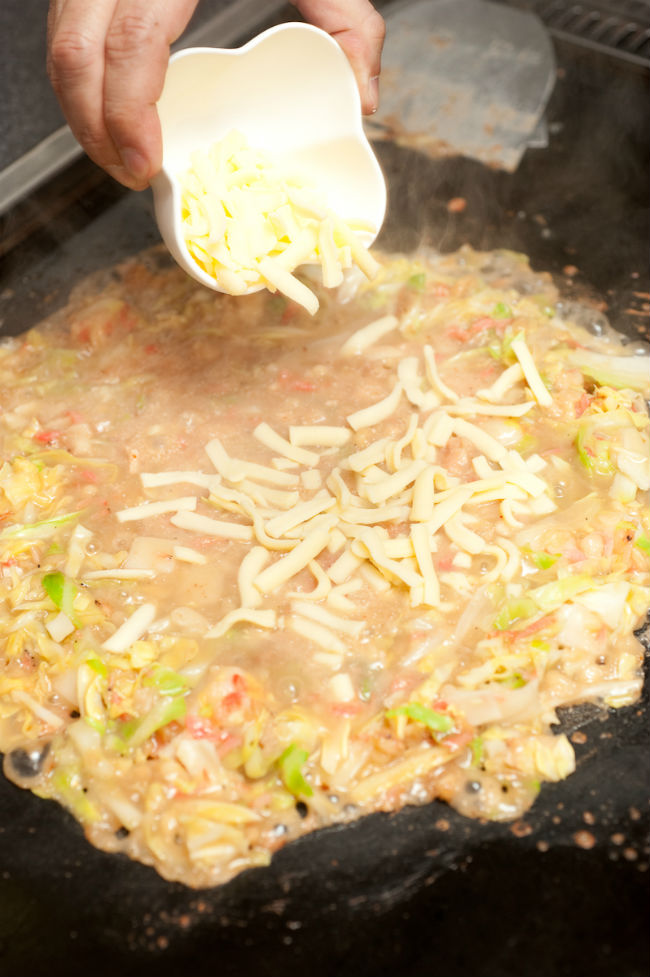
7. Finally, be patient, but not too patient. With monjayaki, the worst thing you can do is just leave it sitting. Like a soft-boiled egg, it is meant to be eaten in a close-to-liquid state.
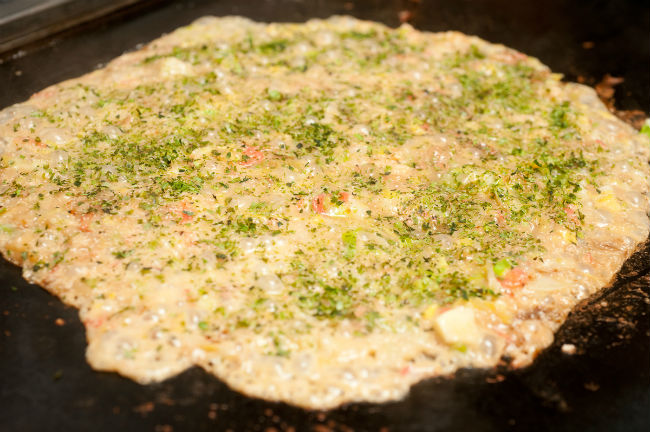
What Did Kelly Think?

When it comes to monjayaki at Tsuru-Chan, Kelly was thrilled to see just how quickly monjayaki can turn from casual to gourmet. Just slide the sizzlingly soft top part of the monjayaki away to the side with your hera, revealing the crispy crust underneath. Then cut this crust away from the main body, fold it over, and voila! Monjayaki suddenly becomes a crepe! This is a "secret" way to enjoy monjayaki that most Japanese don't even know so Kelly felt lucky to experience it. All thanks to Chef Iwasaki, of course.
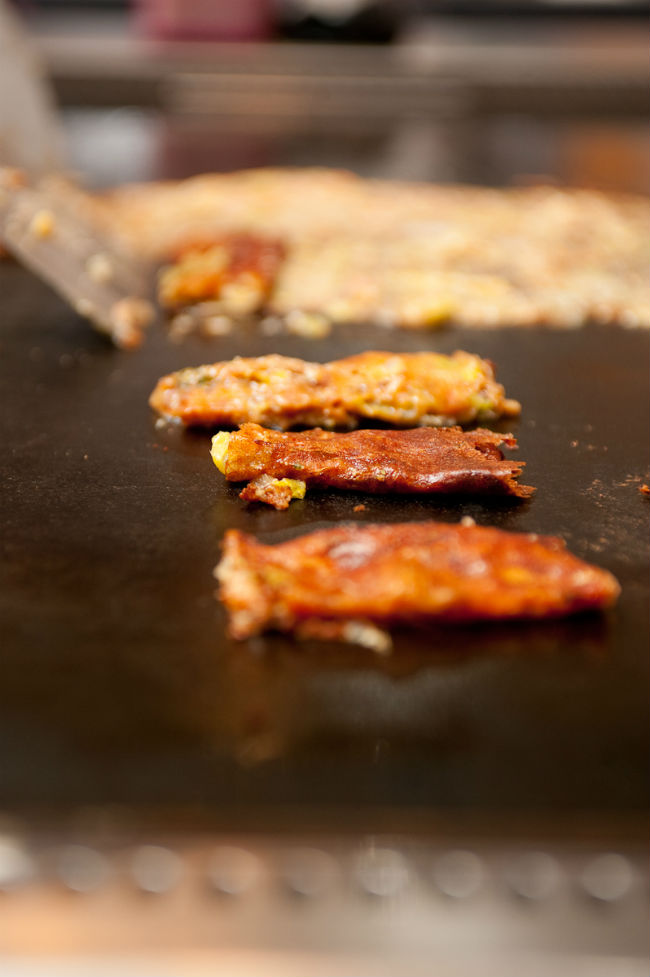
Monjayaki Restaurant Etiquette
In restaurants where both monjayaki and okonomiyaki are served, it’s actually common to eat monjayaki first and follow it up with okonomiyaki. Although plates may be provided at some restaurants, monjayaki can typically be eaten straight off the griddle. What’s more, you may use the tools provided in lieu of chopsticks. This way of eating may take some getting used to, but it has the advantage of allowing you to eat while the food is piping hot and also creates a spirit of community around the act of eating itself, much like shabu-shabu.
Make Okonomiyaki and Monjayaki at Tsuru-Chan Part of Your Japan Stay

Okonomiyaki and monjayaki are like two of the Wests favorite things—pancakes and barbeque—all rolled into one. While you can experience them both at Tsuru-Chan, you should not miss out on the other great opportunities just simmering over at the next grill. As winter turns to spring, there’s no better time to pick up your utensils and turn over a new pancake!


